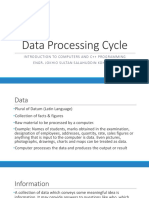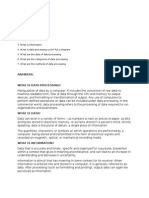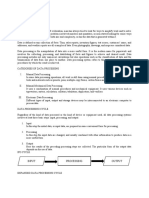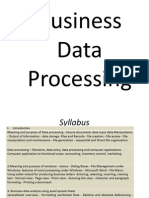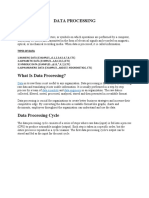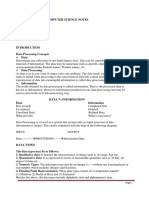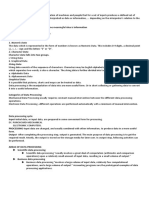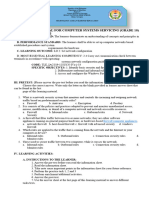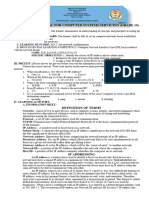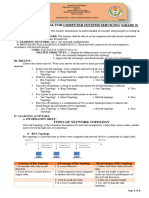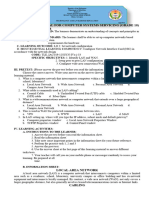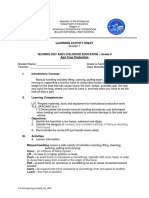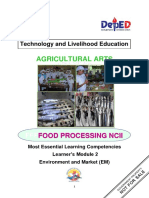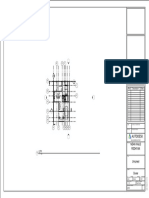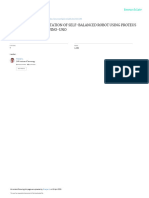0% found this document useful (0 votes)
112 views16 pages04 Data Processing
1) Data processing involves manipulating raw data to transform it into useful information. It includes input, processing, and output stages.
2) Data is raw and unprocessed facts while information is the output of processed data. Examples of data include exam scores and sales figures.
3) The data processing cycle performs input, processing, and output functions. Input collects data, processing manipulates data, and output presents the results.
Uploaded by
Van ImperialCopyright
© © All Rights Reserved
We take content rights seriously. If you suspect this is your content, claim it here.
Available Formats
Download as PPTX, PDF, TXT or read online on Scribd
0% found this document useful (0 votes)
112 views16 pages04 Data Processing
1) Data processing involves manipulating raw data to transform it into useful information. It includes input, processing, and output stages.
2) Data is raw and unprocessed facts while information is the output of processed data. Examples of data include exam scores and sales figures.
3) The data processing cycle performs input, processing, and output functions. Input collects data, processing manipulates data, and output presents the results.
Uploaded by
Van ImperialCopyright
© © All Rights Reserved
We take content rights seriously. If you suspect this is your content, claim it here.
Available Formats
Download as PPTX, PDF, TXT or read online on Scribd
/ 16



